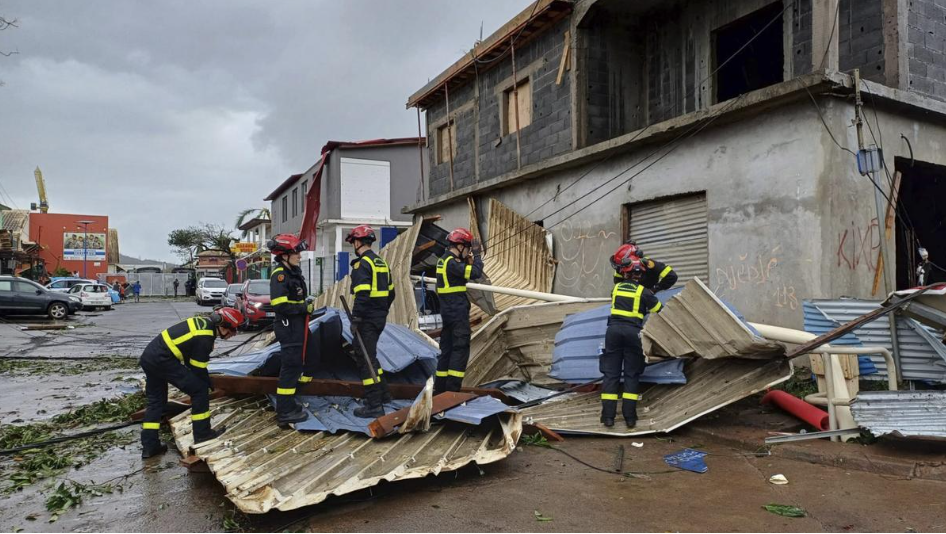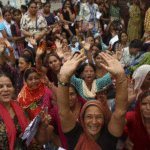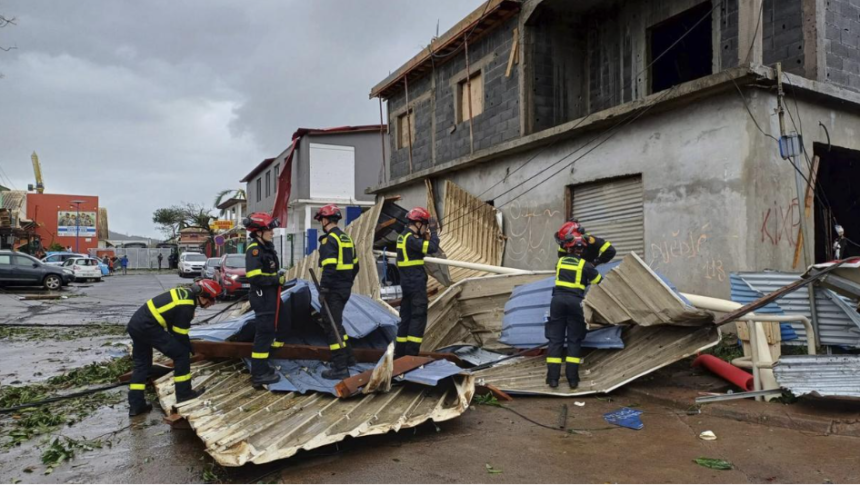1. Introduction: A Tragedy Unfolds in Mayotte
Cyclone Indian Ocean archipelago of Mayotte, a French overseas territory, has been left reeling in the aftermath of Cyclone Chido. Described as one of the most catastrophic storms in the region’s history, the cyclone has claimed “several hundred” lives, according to Mayotte’s top officials.
As rescue efforts continue and the island struggles to recover, Cyclone Chido’s impact extends beyond the immediate devastation. The storm has highlighted Mayotte’s vulnerabilities, from its lack of disaster preparedness to its strained infrastructure. This article explores the storm’s effects, the challenges faced in relief efforts, and the path ahead for this French territory.  For the more information click on this link
For the more information click on this link
2. Cyclone Chido: A Storm of Unprecedented Magnitude
Cyclone Chido formed in the Indian Ocean as a Category 4 cyclone, gaining strength rapidly due to warming ocean temperatures. By the time it made landfall in Mayotte, it was a Category 5 storm, bringing:
- Sustained Winds: Up to 250 km/h, causing widespread destruction.
- Storm Surges: Water levels surged by more than 6 meters in coastal areas.
- Torrential Rain: Triggering landslides and severe flooding in the mountainous regions.
Meteorologists have called Chido a “perfect storm,” combining intense wind speed with exceptional rainfall to wreak havoc on an island already grappling with social and economic challenges.
3. Devastation and Human Impact
The storm has caused immense loss of life and widespread destruction across Mayotte:
- Death Toll: Initial estimates suggest that hundreds have lost their lives, with the number expected to rise as rescue operations uncover more victims. Many fatalities occurred due to collapsing buildings, landslides, and surging floodwaters.
- Injuries and Missing Persons: Thousands of residents have suffered injuries, while hundreds remain missing, prompting fears of a higher death toll.
- Homelessness: Entire neighborhoods have been flattened, leaving tens of thousands displaced and in dire need of shelter.
4. Infrastructure Collapse
Mayotte’s already fragile infrastructure was no match for Cyclone Chido’s onslaught:
- Power Outages: The entire island lost electricity during the storm. Repairs are underway, but full restoration may take weeks.
- Water Supply: Severe flooding has contaminated water sources, exacerbating concerns of waterborne diseases.
- Roadways and Communication: Roads have been washed away, and communication networks have been crippled, hampering rescue and relief operations.
Key public facilities, including schools, hospitals, and government offices, have been rendered inoperable.
5. Relief Efforts and Challenges
Efforts to assist Mayotte’s devastated population are underway, but numerous challenges complicate the response:
- Search and Rescue Operations
French authorities, aided by international agencies, are conducting large-scale search and rescue missions. However, blocked roads and flooded areas limit access to some regions. - Emergency Aid Deployment
France has deployed military aircraft and ships to deliver essential supplies, including food, medical equipment, and clean water. The remote location of Mayotte has made logistics challenging. - Healthcare Crisis
Local hospitals, overwhelmed by casualties, are operating beyond capacity. Mobile clinics have been set up, but medical supplies are in short supply. - Volunteers and Community Support
Local residents are playing a critical role, using boats and makeshift resources to assist stranded neighbors.
6. A Deeper Look at Mayotte’s Vulnerabilities
The catastrophic impact of Cyclone Chido has revealed underlying vulnerabilities in Mayotte’s infrastructure, governance, and social systems:
- Population Density
Mayotte, with its population of over 300,000, is one of the most densely populated territories in the region. Many residents live in informal settlements that are particularly susceptible to extreme weather events. - Economic Disparities
High poverty levels and unemployment have left many residents with limited means to prepare for or recover from disasters. - Climate Change
Experts have long warned that rising sea levels and warming oceans will increase the intensity of tropical storms like Cyclone Chido. - Disaster Preparedness
Mayotte’s disaster response mechanisms were insufficient to handle a storm of Chido’s magnitude. Limited evacuation planning and inadequate infrastructure have worsened the crisis.
7. International Response and Solidarity
Cyclone Chido has garnered widespread attention, prompting solidarity from around the globe:
- France’s Leadership
French President Emmanuel Macron has pledged full support for Mayotte, promising swift assistance in rebuilding the territory. Emergency funding has been allocated for immediate relief efforts. - International Aid
Organizations like the Red Cross, Médecins Sans Frontières, and the World Food Program have mobilized resources to support survivors. - Global Advocacy
The disaster has intensified calls for climate action, with activists urging governments to address the root causes of extreme weather events.
8. The Human Toll: Stories of Survival and Loss
Amid the chaos, harrowing stories of survival and tragic accounts of loss have emerged:
- Community Resilience
Local leaders have rallied their communities, setting up makeshift shelters and pooling resources to aid the vulnerable. - Personal Tragedies
Families have been torn apart, with parents searching for missing children and communities mourning the loss of friends and neighbors. For the more information click on this link
For the more information click on this link
9. Moving Forward: The Path to Recovery
Rebuilding Mayotte will require a comprehensive and collaborative approach:
- Reconstruction Plans
Efforts must focus on rebuilding infrastructure with resilience in mind, ensuring structures can withstand future storms. - Strengthening Disaster Preparedness
Investments in early warning systems, evacuation planning, and public awareness campaigns will be critical. - Long-Term Development
Addressing underlying economic and social disparities will be key to enhancing Mayotte’s ability to recover and thrive.
10. Conclusion: A Call for Collective Action
Cyclone Chido’s devastation in Mayotte serves as a stark reminder of the human and environmental costs of climate inaction. As the territory begins the arduous process of recovery, the international community must rally to support Mayotte, not just in the short term, but in fostering resilience against future catastrophes.
For the people of Mayotte, the journey ahead will be long and fraught with challenges, but with sustained effort and global solidarity, there is hope for renewal and rebuilding. ALSO READ:- Syria Rebel Leader Meets U.N. Envoy in Damascus: Hope for Renewed Peace Talks 2024





